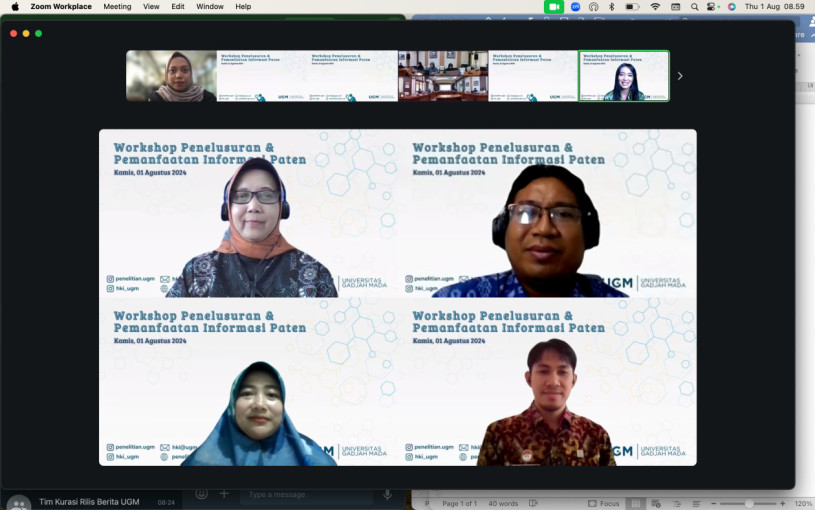
Patents have long been recognized in many countries. However, many still do not understand their importance or the information in patent documents. One of the main requirements for patent protection is novelty.
This novelty aspect is not just about being different from previously disclosed technology, whether obtained from patent or non-patent literature searches, but must be seen from the technical function of the claimed invention.
Unfortunately, some inventors do not understand how to obtain the appropriate supporting documents.
The Directorate of Research at Universitas Gadjah Mada (UGM) organized a Workshop on Patent Information Search and Utilization on Thursday (Aug. 1) to enhance the knowledge and abilities of inventors and researchers.
Over 500 participants attended the workshop, including lecturers, researchers, staff, and students from various faculties and work units.
Professor Diatri Nari Ratih, Secretary of the Directorate of Research, revealed that one of the challenges in the patent application process is searching for previously developed technology.
“Several patent application documents often do not include prior art, which is one of the requirements that must be presented in the background of the invention,” Professor Ratih explained.
The proposed invention’s advantages and previous technology’s weaknesses cannot be identified without comparative documents.
The absence of an early document search process can also result in the patent application being anticipated by previously requested protection technology or non-patent literature published earlier.
“Patent searches are crucial to find supporting documents that contain patent or technological information in the same or adjacent fields,” said Professor Ratih.
Patent searches can help universities understand necessary technology trends, prevent research on the same topics, and anticipate patent violations.
Muhammad Auwalin Rahmana, a Patent Examiner from the Directorate General of Intellectual Property (DJKI), Ministry of Law and Human Rights of the Republic of Indonesia, explained that patent searches have benefits beyond avoiding research duplication and patent violations.
They also help to identify market potential and opportunities for innovation investment cooperation.
“From an industry perspective, by conducting patent information searches independently, inventors can observe technology trends and formulate research strategies beneficial to the industry. Thus, our research will improve,” Rahmana elaborated.
Rahmana added that patent information searches are divided into five stages: state-of-the-art document search, patentability, validity, patent infringement, and patent status.
“Patents or patent applications published by various IP offices can be accessed online, and searches can be conductedthrough freely available patent databases. The search methods include using keywords such as bibliographic information, descriptions, abstracts, and claims,” Rahmana concluded.
Desy Arianti, also a patent examiner at DJKI, discussed the types of patent searches and the methods for conducting patent searches through several sites, such as the Intellectual Property Data Center (PDKI), Google Patent, Espacenet, and Patentscope.
At the beginning of 2024, UGM received 36 certificates, comprising 16 standard patents and 20 simple patents from mechanics, information technology, chemistry, and pharmacy.
This achievement brings UGM’s total certified patents to 323, with the hope that these patents will not only become archives but can also be downstream and utilized by the community.
Author: Triya Andriyani

